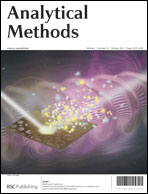We report the fabrication of novel carbon based screen printed disc-shaped recessed electrodes (250 μm radius) which are electrochemically characterised and contrasted to other screen printed sensors previously reported upon within the literature. In these circumstances, the electrode is fabricated entirely through screen printing and the electrode geometry is defined by the dielectric (inert polymer) producing shallow recessed electrodes. In comparison to co-planar carbon screen printed electrodes, the shallow recessed screen printed electrodes exhibit a greater current density over the former. The potential electroanalytical applications of these carbon based disc-shaped shallow recessed electrodes are explored through the sensing of NADH and nitrite exhibiting analytically relevant limits of detection (3σ) of 5.2 and 7.28 μM respectively. Additionally, the electroanalytical sensing of nitrite is further trialled in a canal water sample demonstrating the robust nature of the sensors analytical performance. Furthermore we explore the potential improvement of the shallow recessed electrodes through the fabrication of pentagon-shaped carbon based shallow recessed electrodes, which are compared and contrasted with shallow recessed disc electrodes towards the electroanalytical sensing of manganese(II); we believe this to be the first example of such an electrode geometry. In comparison of the observed current density the disc-shaped shallow recessed electrode offers greater sensitivity over co-planar screen printed electrode, whilst in addition to this, a pentagon-shaped recessed electrode offers improved sensitivity over even that of the disc-shaped shallow recessed screen printed electrode. The ultra-low nM sensing of manganese(II) is shown to be possible at both the disc and pentagon shallow recessed electrodes exhibiting limits of detection (3σ) found to correspond to 63 and 36 nM respectively. Both the disc and pentagon-shaped shallow recessed screen printed electrodes are determined to offer greater analytical sensitivity as determined within this study and in comparison with previous literature using graphitic electrodes. The fabrication methodology of the shallow recessed electrodes is shown to be generic in nature such that the underlying carbon layer, which defines the composition of the shallow recessed working electrode, can be replaced with electrocatalytic surfaces. We demonstrate this with the fabrication of platinum disc-shaped shallow recessed screen printed electrodes, which are electrochemically characterised and explored towards the sensing of hydrazine and hydrogen peroxide displaying limits of detection (3σ) of 26.3 and 44.3 μM respectively, which are found to be analytically useful.

You have access to this article
 Please wait while we load your content...
Something went wrong. Try again?
Please wait while we load your content...
Something went wrong. Try again?


 Please wait while we load your content...
Please wait while we load your content...